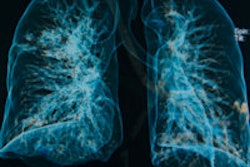The American Cancer Society (ACS) reported this week that there has been a 22% drop in mortality from cancer in the U.S. over the past two decades, a decline that translates into the avoidance of over 1.5 million cancer deaths.
In its Cancer Facts & Figures 2015 annual report, ACS said that much of the decline is due to fewer Americans smoking tobacco. The decline in cancer mortality has been greater among men, who saw higher death rates previously as more of them smoked than women.
The report found that lung cancer death rates declined 36% between 1990 and 2011 among men, and 11% between 2002 and 2011 among women, due to reduced tobacco use. Death rates from breast cancer are down 35% from peak rates, while death rates from prostate and colorectal cancer are down by 47%.
The decline has varied by region, with the largest declines in the Northeast and the smallest declines in the South. For example, the states of Maryland, New Jersey, Massachusetts, New York, and Delaware saw declines of 25% to 30%, and as a result some 29,000 cancer deaths were averted in these states in 2011 alone.
The incidence rate of cancer declined by 1.8% in men. By disease, the incidence rate is declining 3.6% per year for colorectal cancer, 3.0% per year for lung cancer, and 2.1% per year for prostate cancer.
Among women, the overall incidence rate has remained stable. Women have seen similar drops as men for colorectal and lung cancers, but breast cancer rates have flattened. Thyroid cancer incidence rates have also increased dramatically, at an average of 4.5% per year from 2007 to 2011.
The authors offer projections for 2015, including the following:
- There will be 1.7 million new cancer cases and 589,000 cancer deaths in the U.S., or about 1,600 deaths per day.
- Prostate, lung, and colorectal cancer will account for half of all cases in men, with prostate cancer alone accounting for half of new diagnoses.
- The most commonly diagnosed cancers among women this year will be breast, lung, and colorectal cancer, accounting for half of new cases. Breast cancer alone will account for 29% of all new cases.
This year's Cancer Facts & Figures report includes a special section highlighting breast carcinoma in situ. The report estimates that 60,000 new cases will be diagnosed in 2015, accounting for one in five breast tumors in women, and 83% of all in situ breast cancers will be ductal carcinoma in situ (DCIS).
The report notes that while DCIS cannot spread to other organs, it has the potential to become invasive cancer if left untreated, and it is considered to be a precursor to cancer. Studies of women with DCIS left untreated because it was originally misclassified as benign have found that 20% to 53% were eventually diagnosed with an invasive cancer.



















